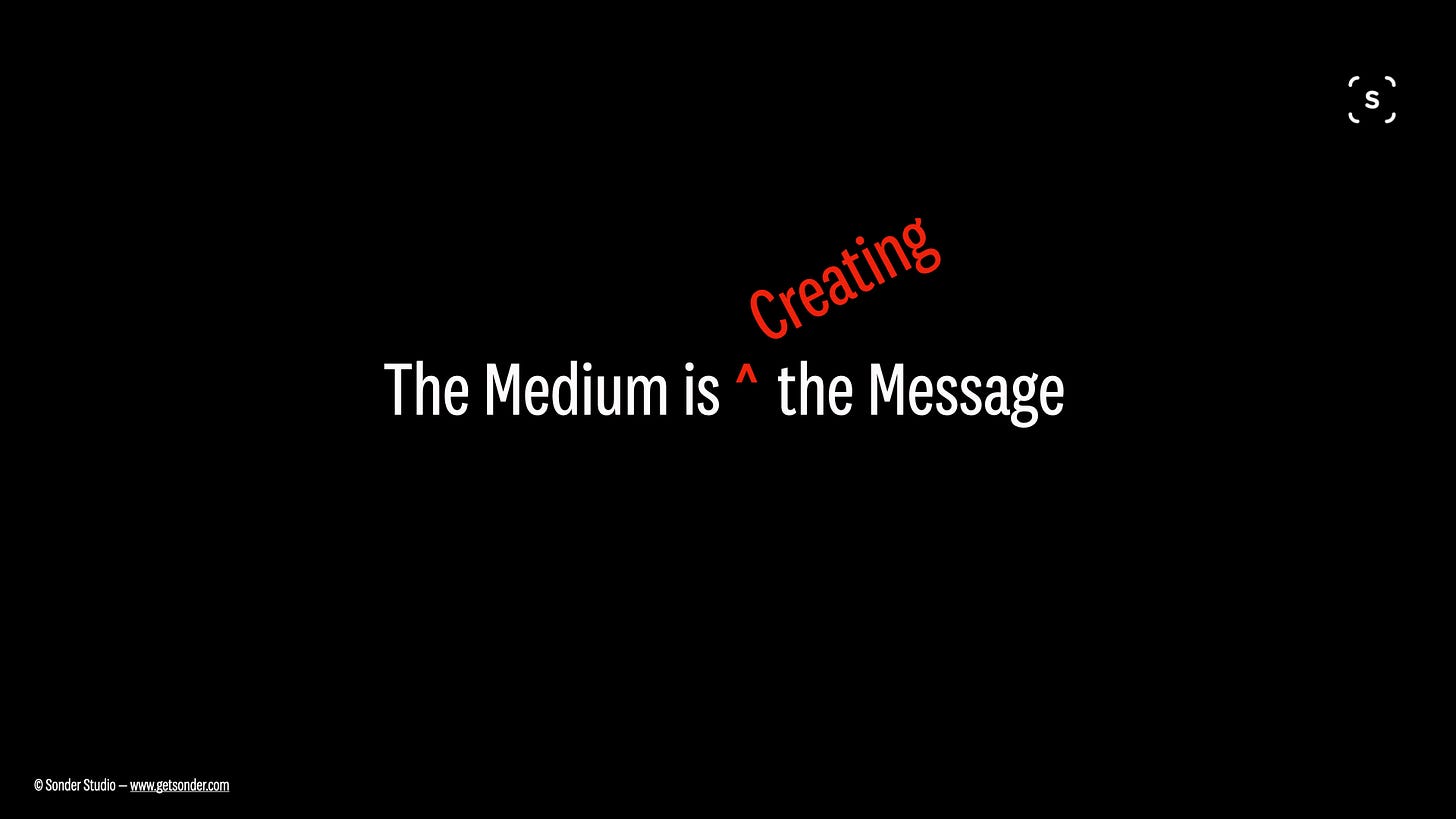Blaise Agüera y Arcas: What Is Intelligence?
A review of What Is Life?: Evolution by Computation, and What Is Intelligence?: Lessons from AI about Evolution, Computing, and Minds, by Blaise Agüera y Arcas
Intimacy with technology has been the territory of science fiction. What happens if we are able to live those stories ourselves?

Throughout history, technology has provided platforms for humans to create new media as conduits for human content. As Marshall McLuhan first described nearly 60 years ago, the printing press, telegraph, television, and (post-McLuhan) the internet allowed for novel media which shaped the messages we send to each other—and the resulting societal discourse. While those technologies shaped the messages, never before has a technology created messages itself.
As we begin to have conversations with generative AI, it is the technology we are conversing with. The medium isn’t just the message—it is creating the message.

Conversational, generative AI changes our relationship with technology because it allows us to have a relationship. We can converse with it. We can learn from it. It can learn from us. We can co-create. It can help us solve problems together. Very personal problems are within the realm of AI just as long as we tell it enough.
That’s where the intimacy door opens: if we tell it enough about ourselves, it can help us with those most personal questions. And if it helps us with those most personal questions, how will we feel about it? Will we form intimate relationships and share our most vulnerable ideas, thoughts, and dreams?
Intimacy with technology has been the territory of science fiction. From the human-robot marriage in Isaac Asimov’s Forward the Foundation to the android Data’s girlfriend in Star Trek The Next Generation to Theodore’s romance with the AI Samantha in Her, we have been entertained by the idea of human-machine love. What happens if we are able to live those stories ourselves?
The most successful technology eras coupled human needs with economic potential.
The internet tapped the human need to learn and know. It collapsed time and space, connecting people to information everywhere, all at once. Advertisers were able to use digital networks to spread their messages immediately. This created the information economy. Information providers monetized our curiosity by interlacing ads and targeting the nexus of our desire for knowledge with what they wanted to sell.
We now live in an era of information abundance yet it seems we can’t agree on basic facts, much less have a conversation about complex issues. Information that wanted to be free has become, in some senses, a collapsed edifice. With infinite informational resources it is a paradox as to why we can feel we know nothing.
The social web tapped our need for attention. Twitter’s graph and algorithm provided a medium for self expression by anyone to everyone. We felt the attention through likes, shares, and comments. We celebrated the magnet of the attention influencers. We built intuitions for power laws—the phenomenon that attention is not equality distributed and the very few gain the eyes of multitudes.
We have become aware of how our attention is harvested by platforms and sold to advertisers who mine all that we’ve shared. This monetization of our scarce attentional resources to personalize commercial opportunities is called the attention economy. Social platforms understand our need for attention. Algorithms deliver the optimal mix of attention grabbing content and ads for things for us to attend to.
Now that the decline in our collective attention span is well documented, there are real fears that these practices have degraded the very resource they sought to exploit. This should herald a warning for what’s in store when we digitize our intimacy. Artificial intimacy has to pay its way, the question is how?
The generative AI era promises to tap into our human need for intimacy. The timing couldn’t be more perfect. There is a world-wide epidemic of loneliness and a mental health crisis in our young people. Generative AI may play an important role in solutions. We may find intimacy with this new form of intelligence that doesn’t replace human connection but is simply different. Plenty of us can form intimate connections with a pet that is different from those with a human. There will undoubtedly be new forms of intimacy with this technology.
But we should learn from what’s come before. Commercially motivated, unconstrained, and poorly designed solutions for information scarcity eroded the veracity of information. A similar pattern happened with attention. Eroding our intimacy destroys us so at our peril do we blindly accept the tenets of the intimacy economy. This time there is even more at stake. The promise has a utopian flavor, but the peril is in all ways a dystopia.
We’re obsessed with the potential for intimacy with AI. How might our intimate partners be designed? What might these new intimate relationships mean to our current relationships? How will we pay for these new intimate partners? Will they be as Siri is on an iPhone, embedded software? Will we have subscription intimacy or will we pay an “intimacy tax” through ads?
Almost certainly, personalization will get a lot more personal once an AI knows all of our most intimate thoughts.
Writing and Conversations About AI (Not Written by AI)